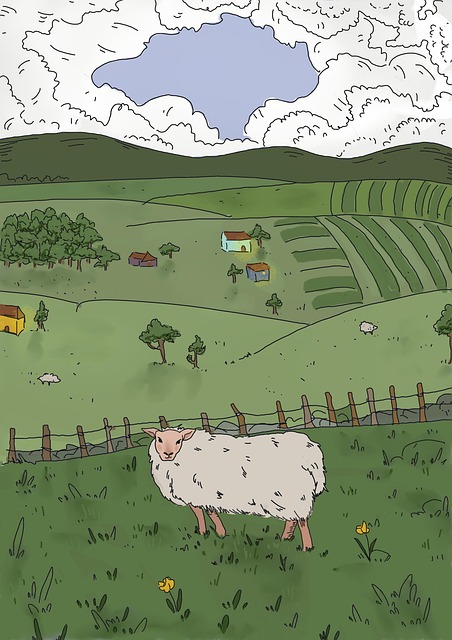In New Bedford, MA, the push for eco-friendly living has extended to outdoor spaces, with an increasing focus on sustainable fencing materials. This article explores the various benefits of choosing green fencing options, from reduced environmental impact to enhanced aesthetic appeal. We delve into popular eco-conscious choices, installation tips, cost comparisons, and community efforts that are transforming New Bedford’s landscape into a model for eco-safe outdoor spaces.
- Understanding Eco-Friendly Fencing Options in New Bedford
- Benefits of Opting for Sustainable Fencing Materials
- Popular Eco-Conscious Fencing Choices for Your Yard
- Installation Tips for Long-Lasting Eco-Friendly Fences
- Cost Comparison: Traditional vs Green Fencing Solutions
- Community Initiatives Promoting Eco-Safe Outdoor Spaces
Understanding Eco-Friendly Fencing Options in New Bedford
In New Bedford, MA, understanding eco-friendly fencing options is becoming increasingly important as residents and local authorities seek sustainable alternatives. These options are designed to minimize environmental impact while providing effective barriers for privacy, security, or aesthetic purposes. Eco-friendly fencing materials range from natural, renewable resources like wood from sustainably managed forests, bamboo, and recycled plastic to innovative products made from organic composites and plant-based fibers.
Each material offers unique benefits, such as superior durability, reduced carbon footprint, and enhanced visual appeal. For instance, wood fences can be treated with eco-friendly preservatives, while bamboo fences are known for their rapid growth rate and strength. Recycled plastic and composite materials not only reduce landfill waste but also provide low-maintenance solutions that stand the test of time. Choosing these options contributes to local ecosystems’ preservation, supports sustainable practices, and fosters a greener community in New Bedford.
Benefits of Opting for Sustainable Fencing Materials
Opting for eco-friendly fencing materials offers a multitude of benefits, both for New Bedford’s environment and its residents. These sustainable alternatives reduce carbon footprints by minimizing the energy consumption and emissions associated with traditional fencing production. By choosing materials like recycled plastic, bamboo, or organic wood, locals can contribute to preserving local ecosystems and reducing pollution.
Moreover, sustainable fencing options often possess superior durability and low-maintenance characteristics. They are designed to withstand harsh weather conditions and require less upkeep compared to conventional fences. This not only saves time and money in the long run but also reduces the need for toxic chemicals and frequent replacements, fostering a healthier and more eco-conscious community in New Bedford, MA.
Popular Eco-Conscious Fencing Choices for Your Yard
When considering eco-friendly fencing options, there are several popular choices that can enhance your New Bedford, MA yard while also benefiting the environment. One prominent option is recycled plastic fencing. These products are made from post-consumer waste, such as plastic bottles, and offer a durable, low-maintenance solution for your outdoor space. They come in various colors and styles to suit different aesthetics.
Another preferred choice is natural, organic materials like wood or bamboo fences. Opting for untreated, locally sourced wood can provide an appealing, natural look while minimizing transportation emissions. Bamboo, known for its rapid growth, is another sustainable option that offers a unique aesthetic appeal. These eco-conscious choices not only contribute to a greener environment but also add value and beauty to your yard.
Installation Tips for Long-Lasting Eco-Friendly Fences
When installing an eco-friendly fence, proper technique and attention to detail are key to ensuring longevity. Begin by preparing the ground, clearing it of any debris or plants, and marking out the fence line. Choose a suitable location for posts, ensuring they’re placed at least every 8-10 feet for stability. Dig holes for the posts, making sure they’re deep enough to provide secure anchor points. Fill the holes with concrete, allowing it to set completely before installing the posts.
Next, assemble the fence panels using the provided hardware. Most eco-friendly fences use recycled materials and innovative designs, so follow the manufacturer’s instructions carefully. Once the panels are securely attached to the posts, ensure all connections are tight and secure. Regularly inspect your fence for any signs of wear or damage and perform routine maintenance as needed to keep it looking its best.
Cost Comparison: Traditional vs Green Fencing Solutions
When considering fencing options, homeowners often focus on aesthetics and durability but also need to be mindful of budget constraints. In New Bedford, eco-friendly fencing materials offer an attractive alternative to conventional choices. While traditional fencing solutions like wood or vinyl may seem more affordable upfront, green fencing systems have their own cost advantages in the long run. These materials, such as recycled plastic, bamboo, or plant-based composites, often come with longer lifespans and reduced maintenance requirements, translating into significant savings over time.
Furthermore, many eco-friendly options are designed to withstand harsh weather conditions without fading or cracking, eliminating the need for frequent repairs or replacements. By choosing sustainable fencing solutions, New Bedford residents can contribute to a greener environment while enjoying a long-lasting, cost-effective barrier that enhances their outdoor spaces.
Community Initiatives Promoting Eco-Safe Outdoor Spaces
New Bedford, MA, has witnessed a growing momentum for community initiatives focused on creating eco-safe outdoor spaces. Local residents and organizations are increasingly recognizing the importance of sustainable practices in their urban environment. This shift is evident in the rising popularity of eco-friendly fencing materials, which not only serve as practical barriers but also contribute to the overall health of the ecosystem.
These initiatives often involve collaborative efforts to install natural fences using renewable resources like bamboo, recycled plastic, or wood from sustainable sources. Such projects not only enhance the aesthetics of public and private spaces but also provide numerous environmental benefits. They support biodiversity by creating habitats for local wildlife, reduce pollution by minimizing the use of synthetic materials, and promote a greener, more sustainable New Bedford.
